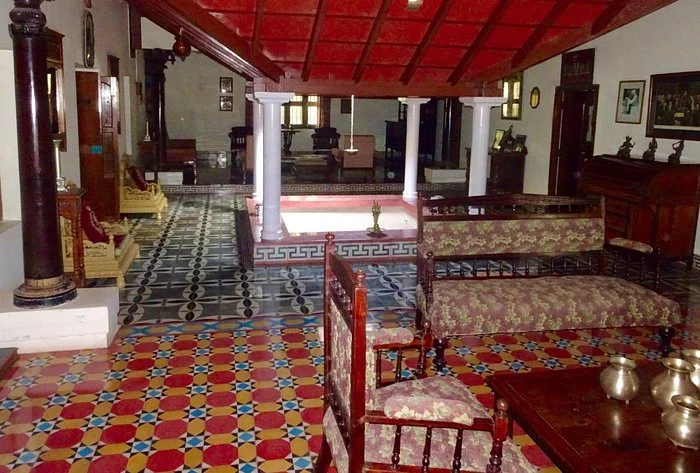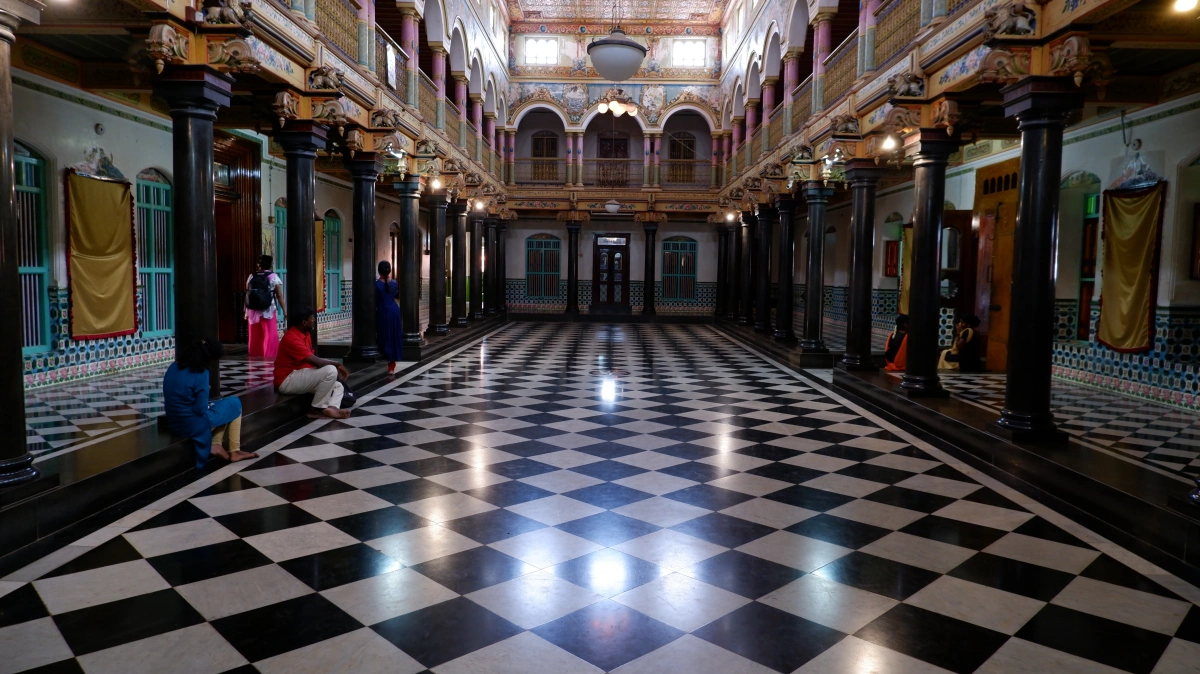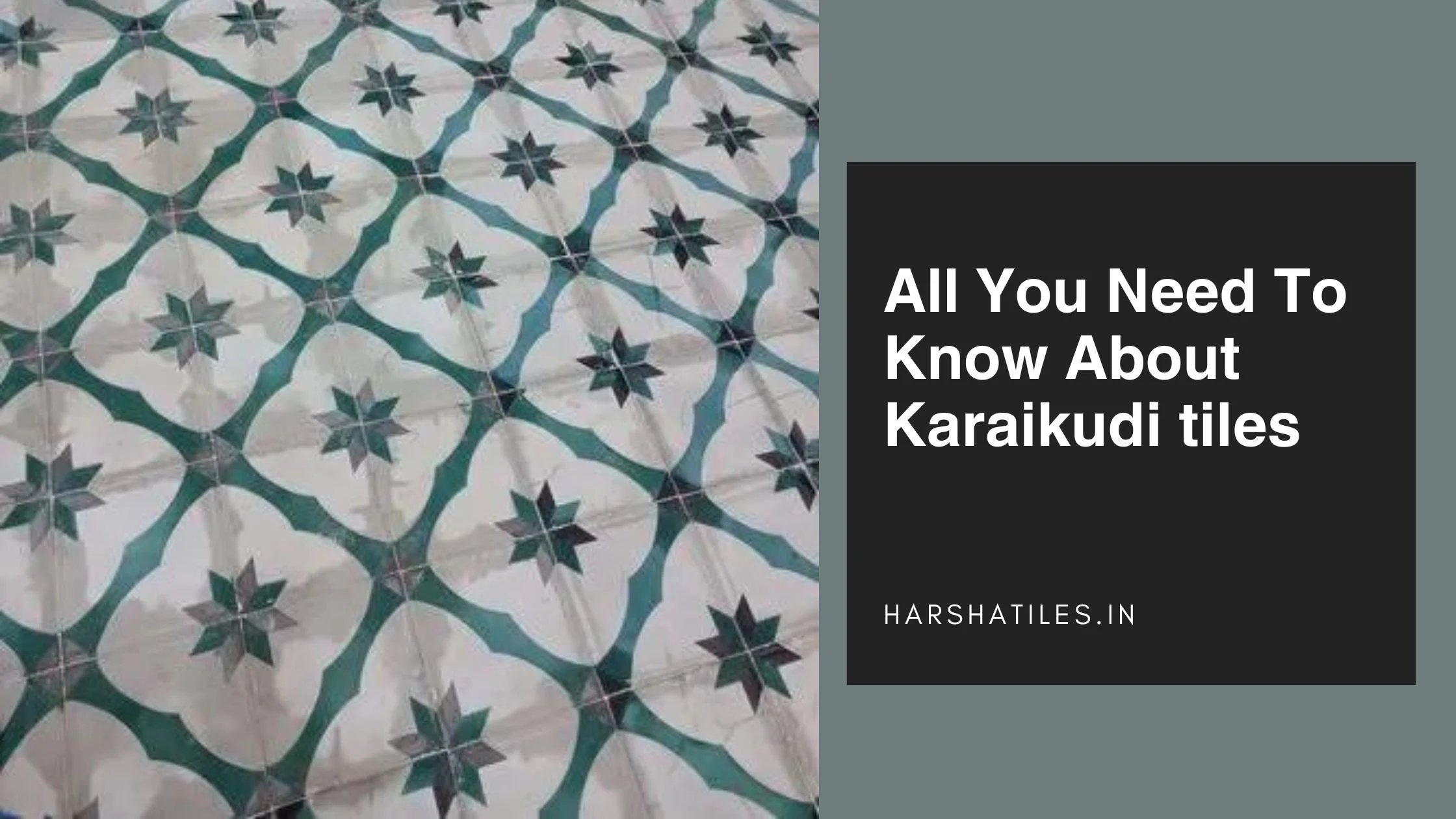Oct 03, 2025
Connect With Our Team
All You Need To Know About Karaikudi tiles
- Home
- Utilities
- News & Blog
Karaikudi tiles, more commonly known as Athangudi tiles, comprise an intrinsic part of South Indian tile art. Enrooted from the Karaikudi region in Tamil Nadu, this art is quite ancient and was used comprehensively in the designs of Chettinad palaces and homes.
It is a guide that explains the origins, inlays, and usages of these beautiful tiles. We will also cover their many benefits.
The Rich History of Karaikudi tiles
The story of Karaikudi tiles, also known as Athangudi tiles, dates back to the 19th century in Chettinad, Tamil Nadu. This was a region of wealthy merchants who wanted unique tiles for their big palaces and homes. These were distinctive tiles showing off the special style and culture of the area.
Origins and Evolution
The initial productions of Karaikudi tiles were used for the fanciful and exquisite buildings of Chettinad architecture. People began using these tiles ever more widely with time. They turned out to be a great preference for old and new designs throughout India. Their unique patterns and bright coloring have turned them very popular and important in culture.

Influence of Chettinad Architecture
The Chettinad architecture had a huge influence on the look and making of Karaikudi tiles. Big palaces and homes in the Chettinad region used these tiles for amazing floor patterns and wall decorations. The use of Karaikudi tiles in Chettinad buildings was helpful in preserving this unique style alive and loved.
Key Takeaways
-
Karaikudi tiles are known as Athangudi tiles, unique and traditional forms of South Indian tile art.
-
These tiles have been in use for the architectural design of Chettinad palaces and homes since centuries.
-
Karaikudi tiles are characterized by various colors and intricate patterns.
-
The tiles are durable and require less maintenance, thus making them apt for several applications.
-
Karaikudi tiles form an essential part of the cultural heritage of the region of Karaikudi.
Karaikudi tiles: Design and Patterns
These tiles from the eponymous village in Tamil Nadu have extremely intricate designs and are also very robust. The traditional cement tile-making process combines cement with sand and natural pigments, giving it a very earthy feel. Today, more often than not, ceramic tiles lend additional strength and water resistance to these tiles. They come in 300 x 300 mm standard sizes and thus allow several design layouts for the same. In most cases, the tiles have a matte finish, thus showing the intricate patterns of geometry, floral motifs, and bold colors. This combination brings warmth into an area, makes it inviting, and provides numerous design variations to appeal to various tastes.
Karaikudi tiles come in a great variety of designs. They range from the traditional style to the most modern. Artists in this region are adept at blending ancient grace with contemporary trends.
1. Traditional tile patterns
Traditional tile patterns often use shapes like diamonds, hexagons, and triangles. These shapes are arranged in patterns that look balanced and symmetrical. They honor the long history of Chettinad's architecture, where Karaikudi tiles have been key for centuries.

Traditional tile patterns make use of shapes such as diamonds, hexagons, and triangles. These shapes face patterns, most of which seem balanced and symmetrical, hence reverting to the longevity that has characterized Chettinad's architecture through the centuries in which Karaikudi tiles have played a vital role.
2. Geometric patterns in Karaikudi tiles
The karaikudi tile designs feature geometric patterns that speak of the prowess of the artisans. These finely detailed patterns make a space look beautiful and symmetric. They are used on the floors, walls, and ceilings in traditional homes and buildings.

3. Floral designs in Chettinad tiles
Chettinad tiles also have floral designs inspired by the greenery and beauty of the area. They are detailed and give elegance and warmth to any room. They remain a favorite for old or new interior styles.

The Enchantment of Karaikudi Tiles
-
Aesthetics Without Comparison: Karaikudi tiles hold an old-world charm. Their intrinsic geometrical patterns, florals, and bold colors give character and elegance to spaces.
-
Durability: They are made from strong raw material, which renders them very durable. They can bear heavy traffic and with time.
-
Versatility: Karaikudi tiles need not necessarily be a floor. The ingenuity that you can bring into using them on walls, backsplashes, and even as decorative accents is endless.
-
Eco-friendly: The materials used are entirely natural, and the handcrafted methods contribute towards the concept of sustainable living.
Applications of Karaikudi Tiles
Versatility makes them useful both for a variety of interior and exterior spaces. One can use them for:
-
Flooring: With durability and aesthetic appeal, they serve as an excellent flooring material in the living room, bedroom, or kitchen.
-
Wall cladding: Use it to create interesting accent walls or cover entire rooms for dramatic effects.
-
Backsplash: Add elegance to your kitchen with a Karaikudi tile backsplash.
-
Outdoor spaces: Karaikudi tiles are resistant to any weather and will definitely raise a yard, patio, balcony, or pool area to a whole new level in terms of beauty.
-
Decorative details: Noted tiles could be used in various designs for things like coasters, trays, or even wall art pieces.
FAQ
1. What are Karaikudi tiles?
Karaikudi tiles are also known as Athangudi tiles, named after the place in Tamil Nadu. It is a peculiar kind of South Indian tile art. These tiles have an ancient history and were in use for many centuries in Chettinad palaces and homes.
2. What is the history of Karaikudi tiles?
The Karaikudi tiles originated in the 19th century in the Chettinad area of Tamil Nadu. This region was prominent for its affluent merchant communities. These tiles were initially used in magnificent Chettinad palaces and homes to showcase regional style and culture.
Over time, as people became aware of these tiles, it became prominent for old as well as new designs.
3. What are the design patterns of Karaikudi tiles?
The designs in Karaikudi tiles range from traditional to modern. The traditional designs mostly include diamonds, triangles, etc., of geometric shape. They also include florals that are inspired by nature from the Chettinad region.
Of late, custom designs are also being made by the artisans. This provides scope for the owner or designer to give a personal touch to their space with unique designs.
4. What are the benefits of using Karaikudi tiles?
Traditional look and durability: Karaikudi tiles are very easy to maintain and have an everlasting look. They bear much footfall without getting worn out. Their intricate designs, bright colors, and simple aesthetics create a unique and eye-catching appeal in any space.
5. How can Karaikudi tiles be used in interior design?
Karaikudi tiles can be used for flooring, wall cladding, and even furniture accents. The fitting in traditional and modern designs alike adds to the cultural heritage by giving visual interest. These tiles are perfect for entryways, living rooms, and outdoor areas, showing off their durability and beauty.
Conclusion
Karaikudi tiles represent not only flooring but also a piece of the rich cultural heritage of Indian architecture and craftsmanship. Be it now, Harsha Tiles feels proud about bringing these timeless designs into your modern spaces, blending tradition with innovation. Be it a touch of history that you want to infuse into your home or a more sustainable and long-lasting flooring solution, Karaikudi tiles are one of the finest available options. Have a look at our collection and let Harsha Tiles help you to create spaces that will resound with elegance and cultural richness from this iconic tile tradition.
Latest Blogs
Got questions? Fill out the form and get in touch with us!
Harsha Tiles
21,22 Cowley Brown Road ,
R.S. Puram,Coimbatore – 641002.
2025 Harsha Tiles | Design And Managed By : LLS - INDIA
Whatsapp Chatx
Hi! Click one of our representatives below to chat on WhatsApp or send us email to info@harshatiles.in
 |
Mr Saleem +91 82702 80707 |
 |
Mr Martin +91 78688 86655 |

We will love to hear from you!


